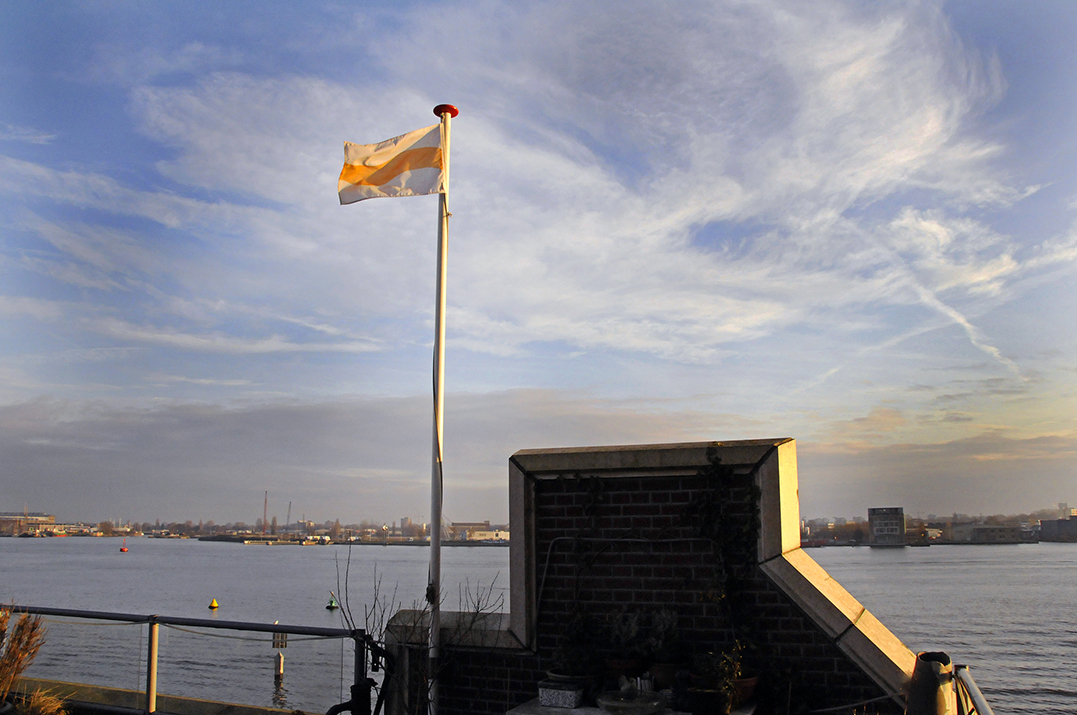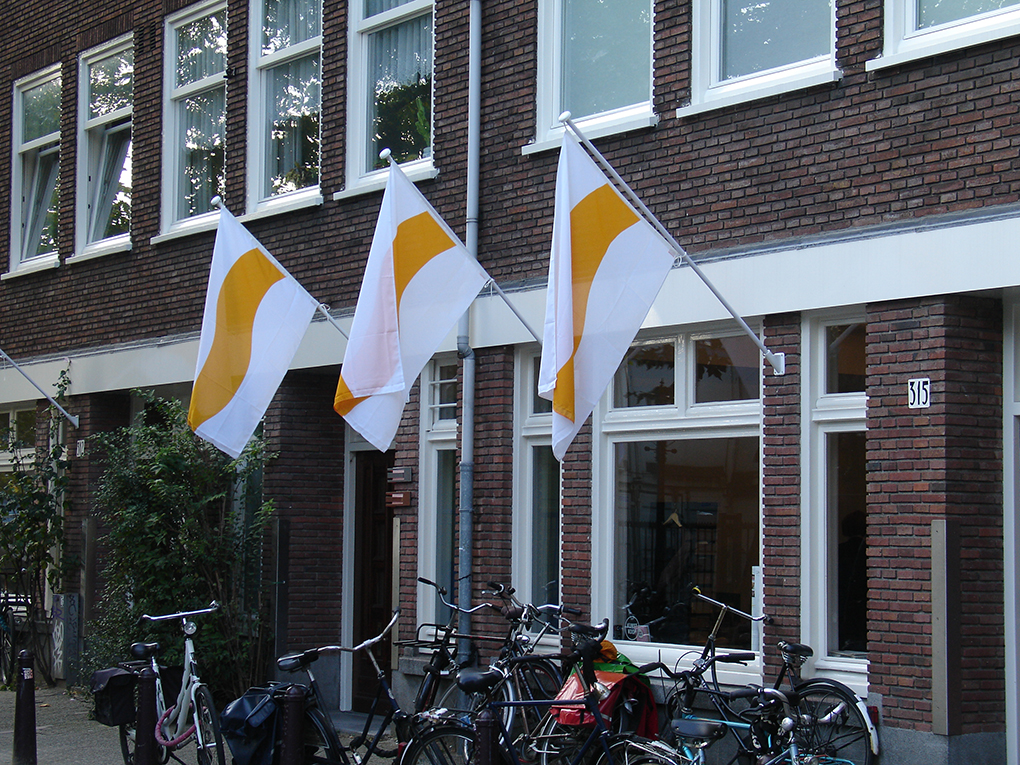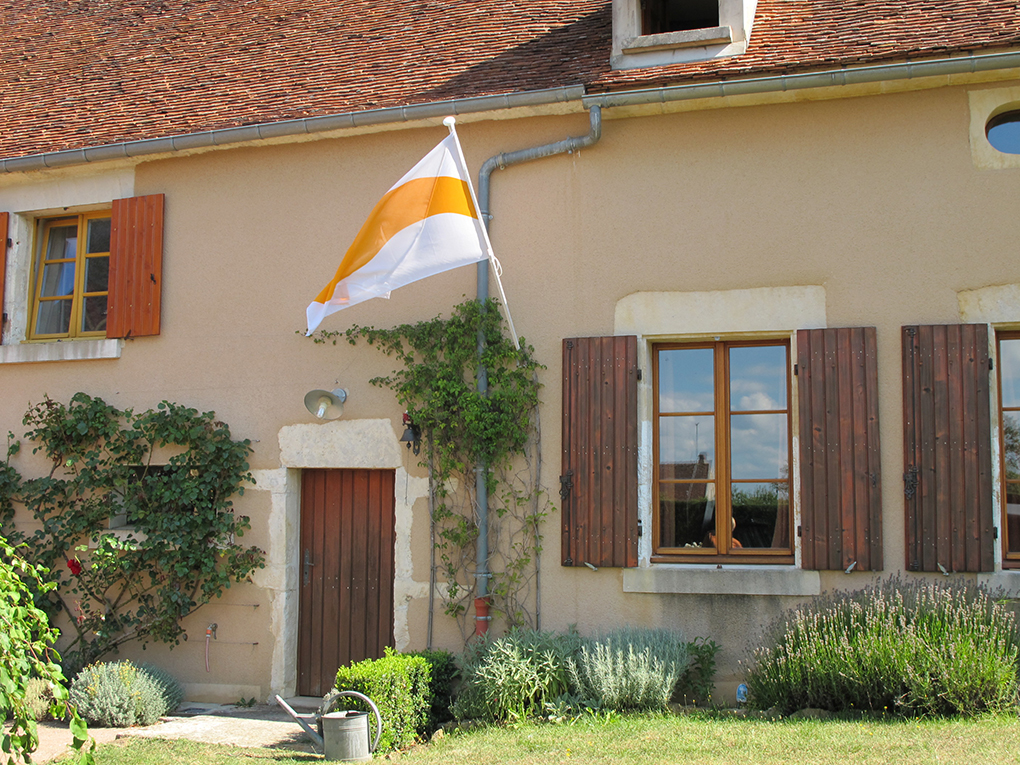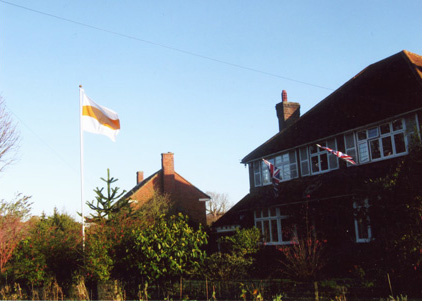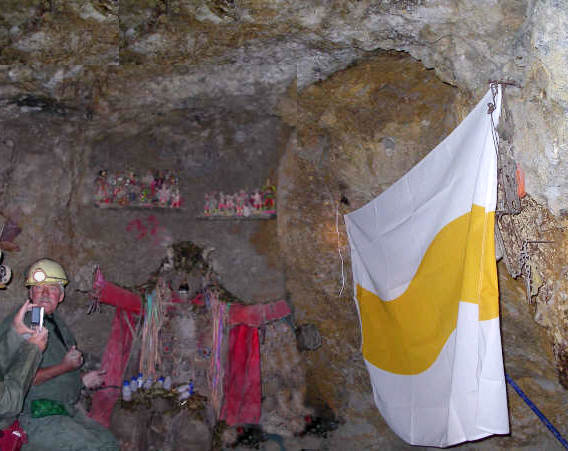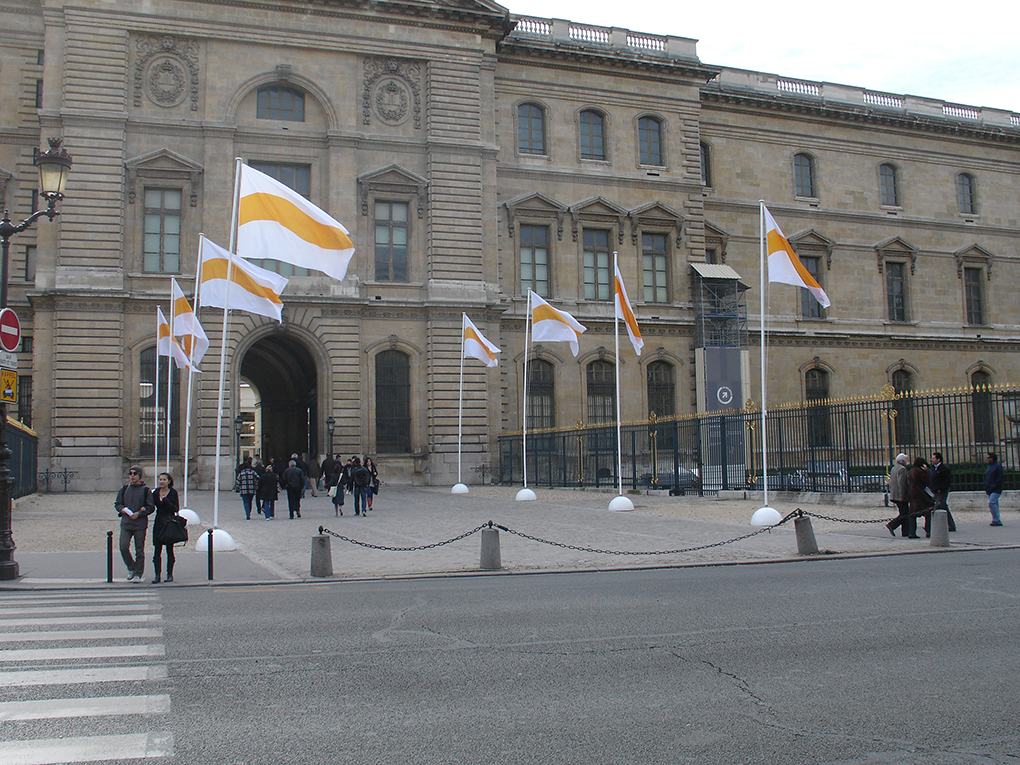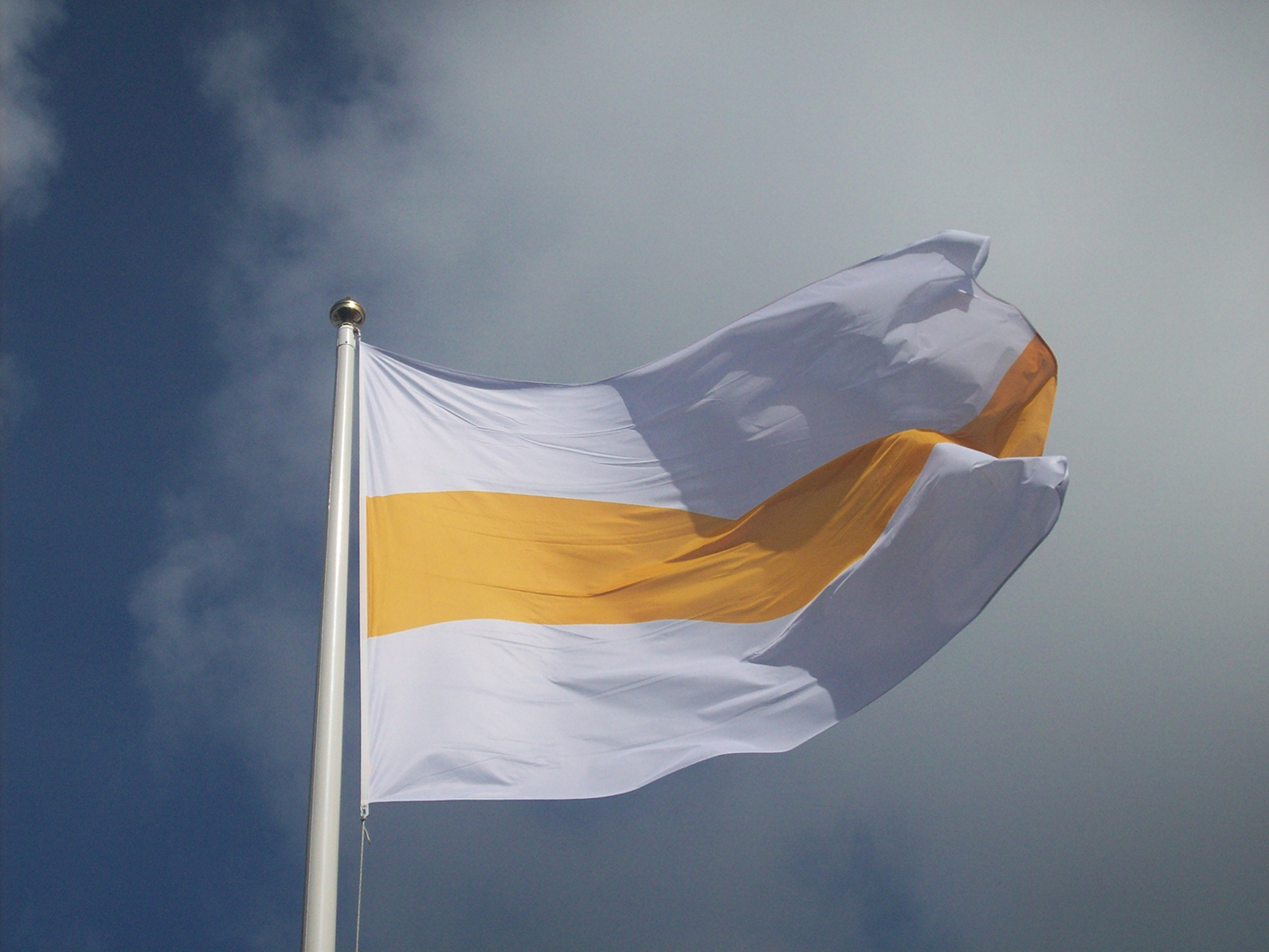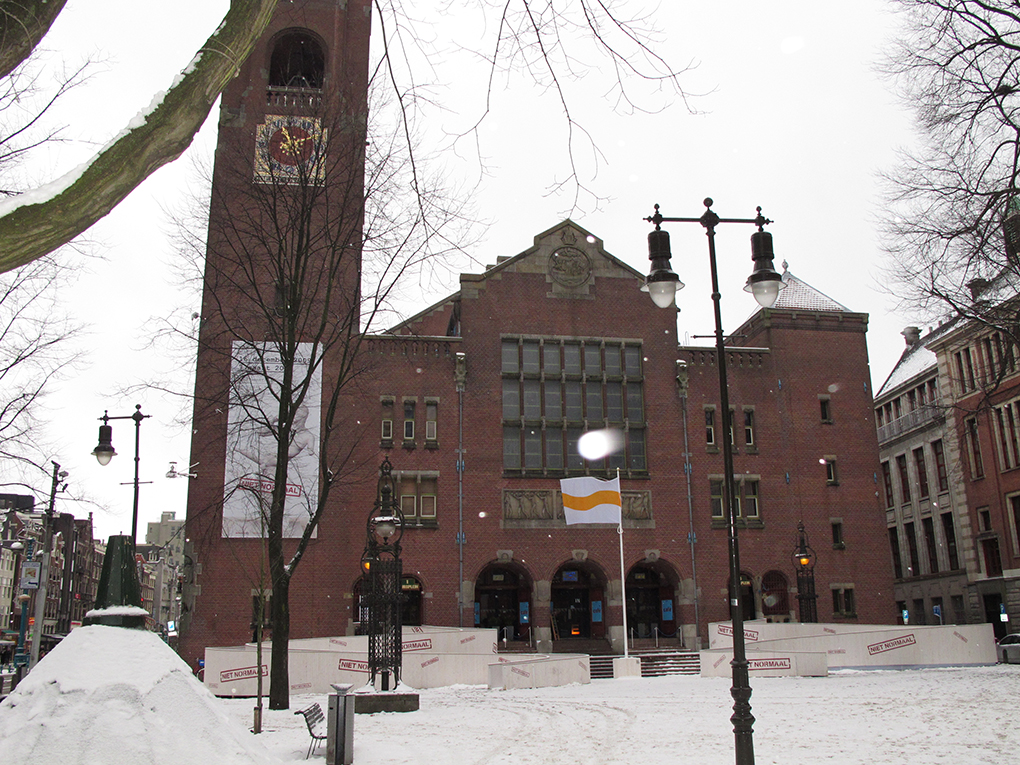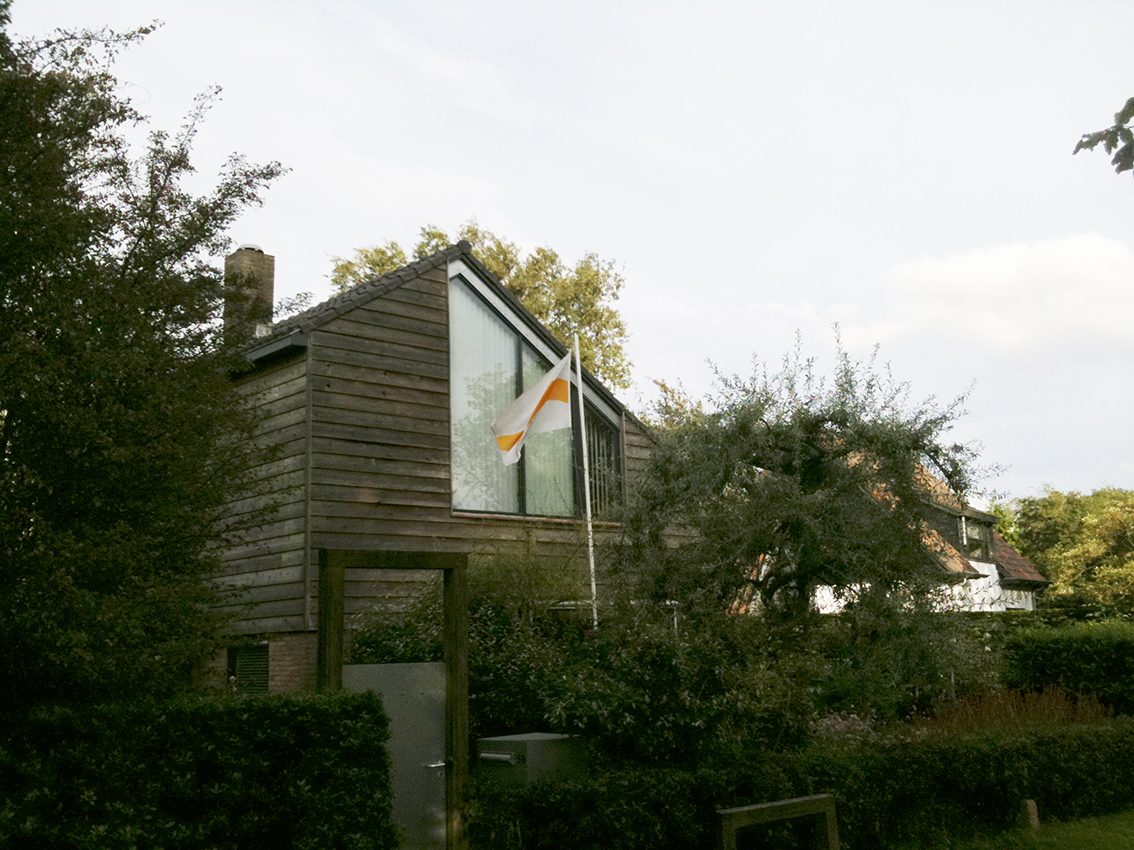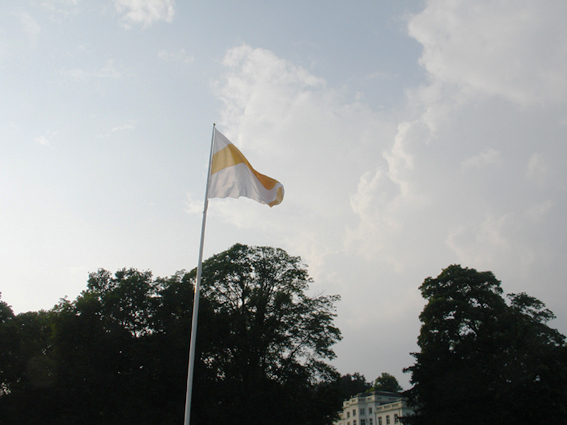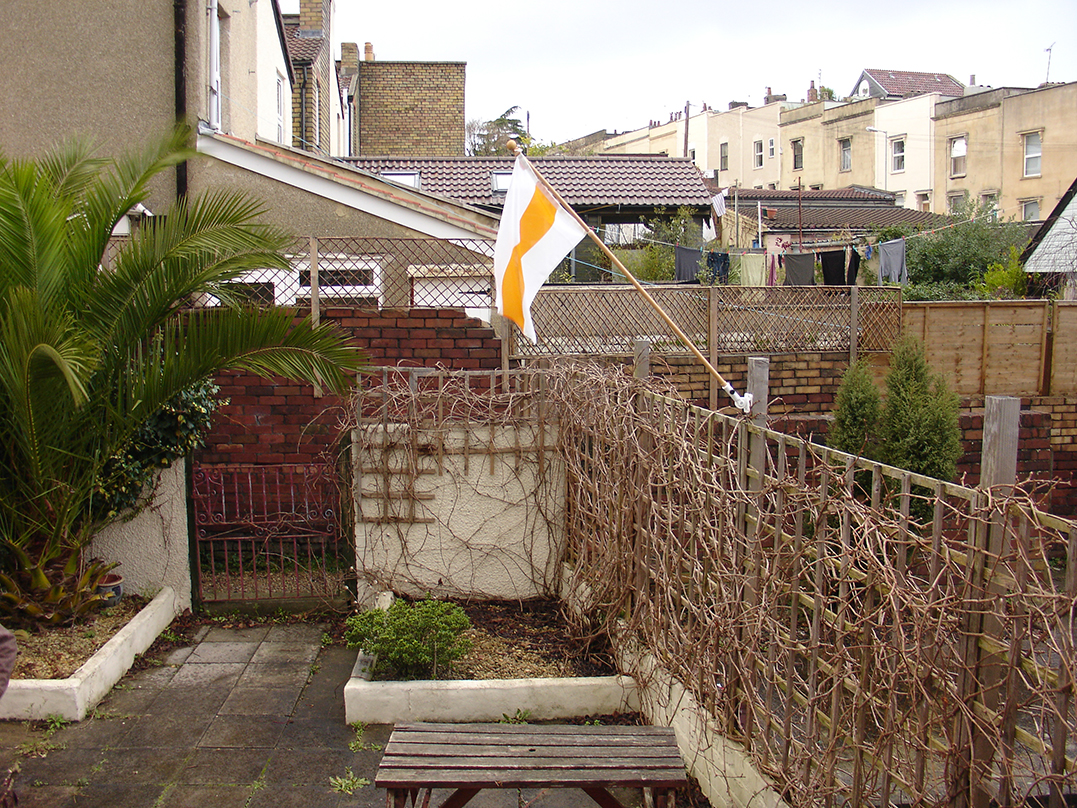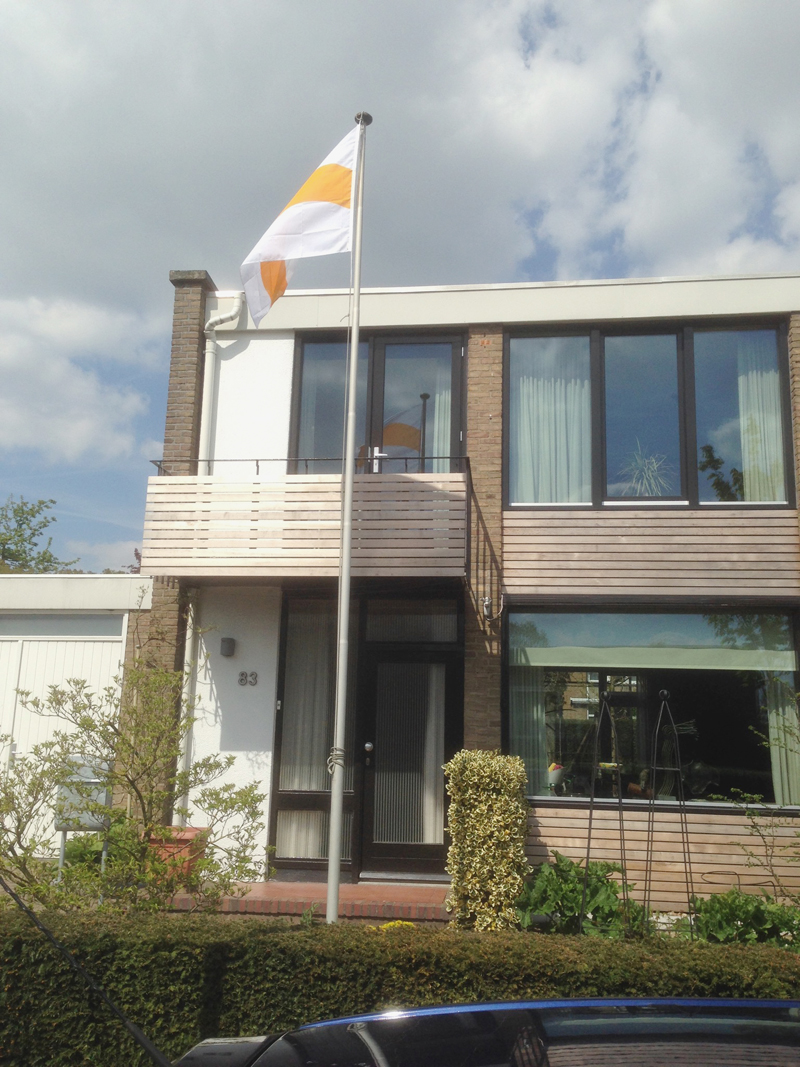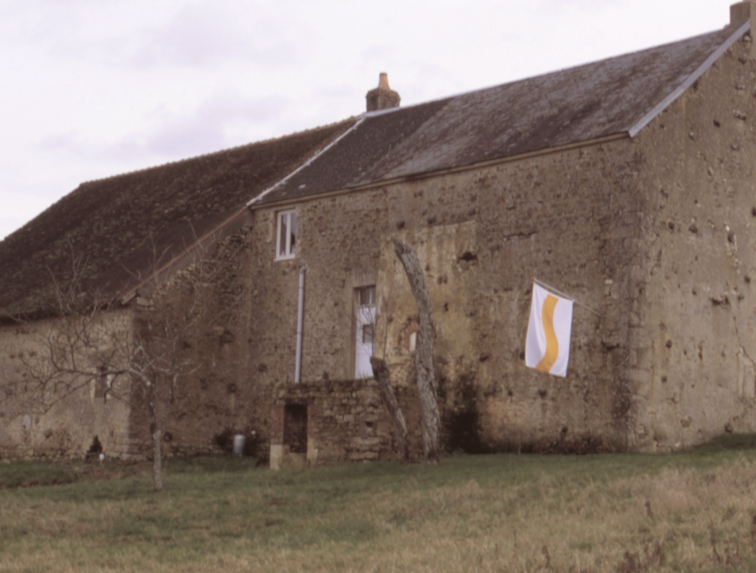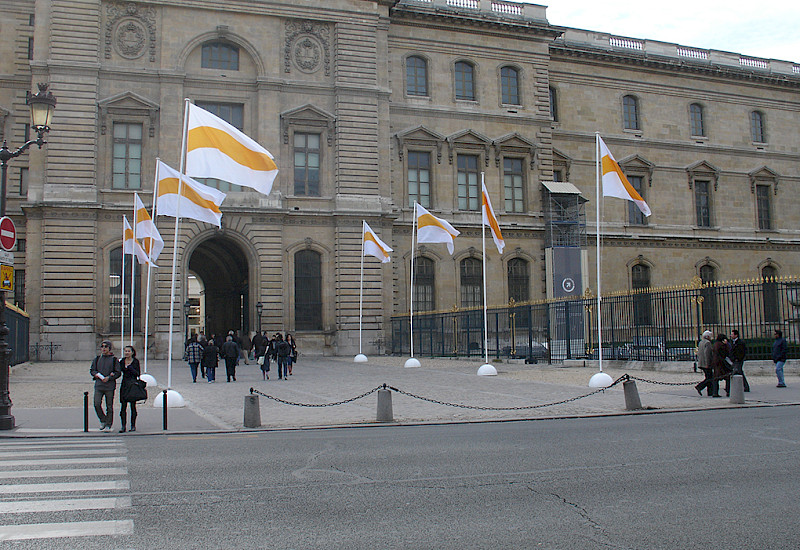Board members
Herman Bunjes (chairman 2008 - 2013)
Judge, former lawyer
Read Herman's motivation:
Judge, former lawyer
Read Herman's motivation:
When I raise the flag of compassion
or when I notice on my walks the flag of compassion waving in the wind
my feelings take a much broader flight than when just thinking of the term con-sideration,
which is the official meaning of the word compassion in the dictionary.The flag, on that spot, at that time, symbolizes
passion, affection, love, emotion and sometimes also pain and suffering,
in which I involve others, or others engage me.
To me therefore the flag of compassion means involvement with each other when we need each other and want to share some of our feelings.
Bert Steevensz (secretary 2008 - 2016)
Art historian
Read Bert's motivation:
Art historian
Read Bert's motivation:
Compassio is the Latin translation of the Greek word sympathos. Both words literary mean fellow-suffering/to sympathize with someone. But what a difference in intensity or even in meaning there is today between these two essentially related words.
The meaning of words changes in the course of time, as times change themselves. ‘What the world needs now is love sweet love’, so the lyric of some decades ago goes. But I think we now are much more in need of compassion because compassion implicates a more active and intense involvement. Love, compared to compassion, feels almost too detached.
A foundation that aims to propagate compassion has hence my full-hearted support.
Suzanne Tesselaar (treasurer 2008 - 2010, board member 2010-2016)
Organisation advisor, author and teacher
Read Suzanne's motivation:
Organisation advisor, author and teacher
Read Suzanne's motivation:
"Compassion" for me means “together” and “passion”, and these two words summerize why I am enthusiastic about the Unda Foundation. When I saw the Flag of Compassion for the second time being manipulated by a twirler, I thought “how wonderful this project is as it brings together people, compassion and empathy.” The specifics of art together with the concern for people; this fits in with my daily work as a communication specialist: to connect people with a goal and a passion in organisations in constant change. Storytelling, the subject of my PhD thesis, is similar to the Flag of Compassion, a symbol for culture and for something that binds and connects people. And that is exactly my interest!
Marja Bloem (board member 2008 - 2013)
Independent curator, critic, exhibition maker
Read Marja's motivation:
Independent curator, critic, exhibition maker
Read Marja's motivation:
Some images stay in my mind forever. The old, dressed in grey, man performing a ‘prayer’ with the yellow and white Flag of Compassion of the Unda Foundation is one of these. Praying and compassion, in my opinion, are closely related. As compassion is a universal quality it is important to help it spread throughout the world.
Another reason I like the Unda Foundation is that the idea of compassion is understood in a very general way; compassion can be felt for anything, anywhere, it is not related to a specific country, culture or humanitarian problem. Wherever or whenever there is a need, the Flag of Compassion should be raised.
For these reasons, I am thus delighted to be on the Board of the Unda Foundation and to be able to put my energy into raising this flag as often as possible.
Anna Tilroe (board member 2008 - 2016)
Art critic, curator, artistic director of the international sculpture exhibition Sonsbeek 2008
Read Anna's motivation:
Art critic, curator, artistic director of the international sculpture exhibition Sonsbeek 2008
Read Anna's motivation:
The Flag of Compassion is the most touching flag I know. It is the symbol of our striving for human greatness which, when enslaved, exploited or ignored, causes feelings of emptiness, alienation and isolation. Without this striving we lose hope, together with the perspective of a better future. Compassion is the main principle of both. It is the ability to be attentive and respectful to the other and otherness, to known and unknown forms of life; and to act accordingly. One who knows Compassion is able to see him or her self as part of a whole, as an individual who, like all creatures around him, struggles painfully to develop himself optimally. Compassion is the --painfully achieved-- quality to transcend oneself.
Herman Doeleman (board member 2008 - 2009)
Bob van der Mast (treasurer 2010 - 2019)
Economist, former banker
Read Bob's motivation:
Economist, former banker
Read Bob's motivation:
Compassion is a special human quality. We feel compassion because we are able to imagine ourselves in the other's position.
We can feel what others feel. And this feeling is urging us to act.
Spinoza sensed that love and benevolence are the true motives to help our fellow-men. Giving love makes us happy.
I feel a bond with this.
Julienne Straatman ( board member 2013 - 2016)
Historian, communication advisor, teacher, patron
Read Julienne's motivation:
Historian, communication advisor, teacher, patron
Read Julienne's motivation:
Awarding or receiving a flag, at several stages of my life, has always been a meaningful gesture. At such moments I am more aware than ever of the power of this universal symbol of unity and shared ideals.
Flag of Compassion stands out for me because it gives more personal depth and reinforces the desire to be able to contribute to a better world.
Frederique Vles-Jager (board member 2014 - 2016)
Legal advisor, former lawyer, project manager
Read Frederique's motivation:
Legal advisor, former lawyer, project manager
Read Frederique's motivation:
Compassion is an extensive concept and is subject to each person's own interpretation. It exists in a broader as well as a more narrow sense, but it always expresses engagement, respect and charity. Especially when people are busy and seem to lose time for matters that do not directly affect their own interests, compassion can fulfil an important role in ensuring that people stay connected and continue to offer support to each other. This form of compassion is what I wish to promote.
Robert Rinnooy Kan (chairman 2014 - 2023)
Corporate governance consultant, lawyer, entrepreneur
Read Robert's motivation:
Corporate governance consultant, lawyer, entrepreneur
Read Robert's motivation:
Three questions about compassion
Is the number of people that act with above-average compassion, equal to the number of people that stay below that average? If that were true then compassion would be measurable, calling into existence a "compassion median". I don't believe this is the case.
Still, I like the term "the compassion median". Our fellowmen determine whether we have acted with or without sufficient compassion. The first question, "Is my behaviour under or above the compassion median?" thereby invites one to reflect upon one’s own behaviour through the eyes of others. This invitation to reflect on one’s own performance increases one’s capability for self-cleansing and thereby the likelihood of intrinsic behavioural improvement.
The experience of governance of the past 400 years –for the sake of convenience, I have taken the incorporation date of the VOC in 1602 as a starting point– show that regulation and codes of conduct have limited value when it comes to influencing the behaviour of an elected leader. Perhaps we should, therefore, elect our leaders while bearing in mind their track record in showing compassion for others.
The second question "When was the last time that you acted with compassion according to a colleague/subordinate/client/family member/friend/enemy?" may not only be posed to a candidate in a job interview but also to any other person regardless of his or her role in society. Every day. Every week. Every month. Every year. Nothing prevents someone from regularly asking oneself that question.
Naturally, the third and final (counter) question subsequently arises, "But what is meant by compassion?" The curiosity about the answer to that question in itself increases the chance of more compassionate behaviour. Especially when we submit our answer for review by others.
It makes us all jointly responsible.
Patty Voorsmit (secretary 2016 – 2023)
Entrepreneur and independent adviser in sectors of culture and media
Read Patty's motivation:
Entrepreneur and independent adviser in sectors of culture and media
Read Patty's motivation:
‘Flag of Compassion’ is dedicated to encouraging people to think about the notion of compassion.
It is relatively easy to have compassion with like-minded people, but how do we develop empathy for individuals who are fundamentally different from ourselves, and who may challenge our ability to feel compassionate towards them?
According to the Buddhist view of life, a deep sense of compassion leads to the desire to help others and to become involved in their suffering. However, Plato and Zeno reject the notion of compassion if it involves pity: relationships based on pity detract from their ethical ideal of rational restraint. These philosophers argue that if we lack common sense and wisdom, we sometimes do more harm than good.
In short, my own thoughts on compassion have not yet fully matured. I still have many ontological questions, and as a member of the board, I would like to encourage others to join in the discussion of what compassion is, and to explore with them what it means to others and myself.
Pauline Voortman (treasurer 2019 - 2023)
Human Resources Development (HRD) consultant, entrepreneur
Read Pauline's motivation:
Human Resources Development (HRD) consultant, entrepreneur
Read Pauline's motivation:
I find it a fantastic idea to work towards a central and renewed place for the notion of compassion in society, by means of an artwork.
The paradox of the conceptual artwork Flag of Compassion, the several elements of the artwork and the choice to not make statements on the meaning of compassion, appeal to me.
For the latter, I had to switch my mindset. As a scientific researcher in the field of trust in organizations, I got used to the concept of ‘construct clarity’.
Thus, the Flag offers me a new way of looking and I hope to contribute, via this board position, to the talking about and acting upon compassion in society.
The Flag of Compassion is spotted in various places.
